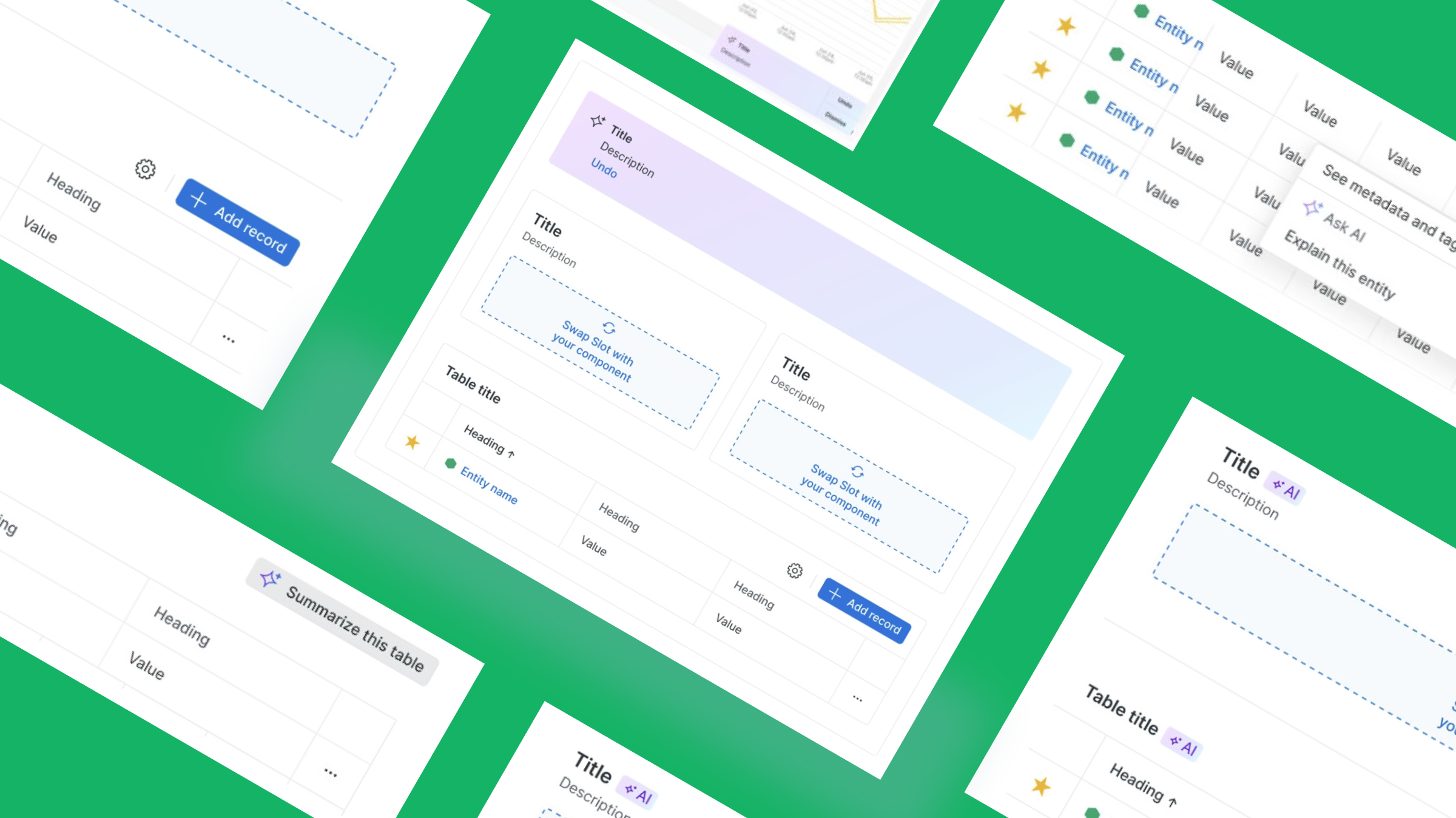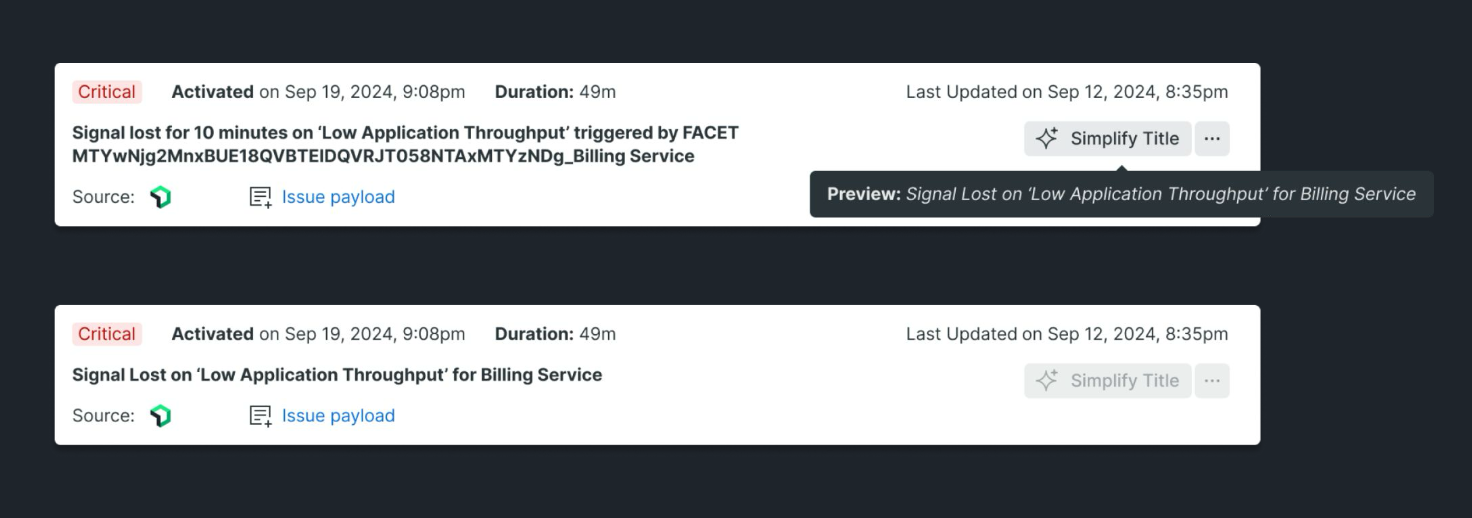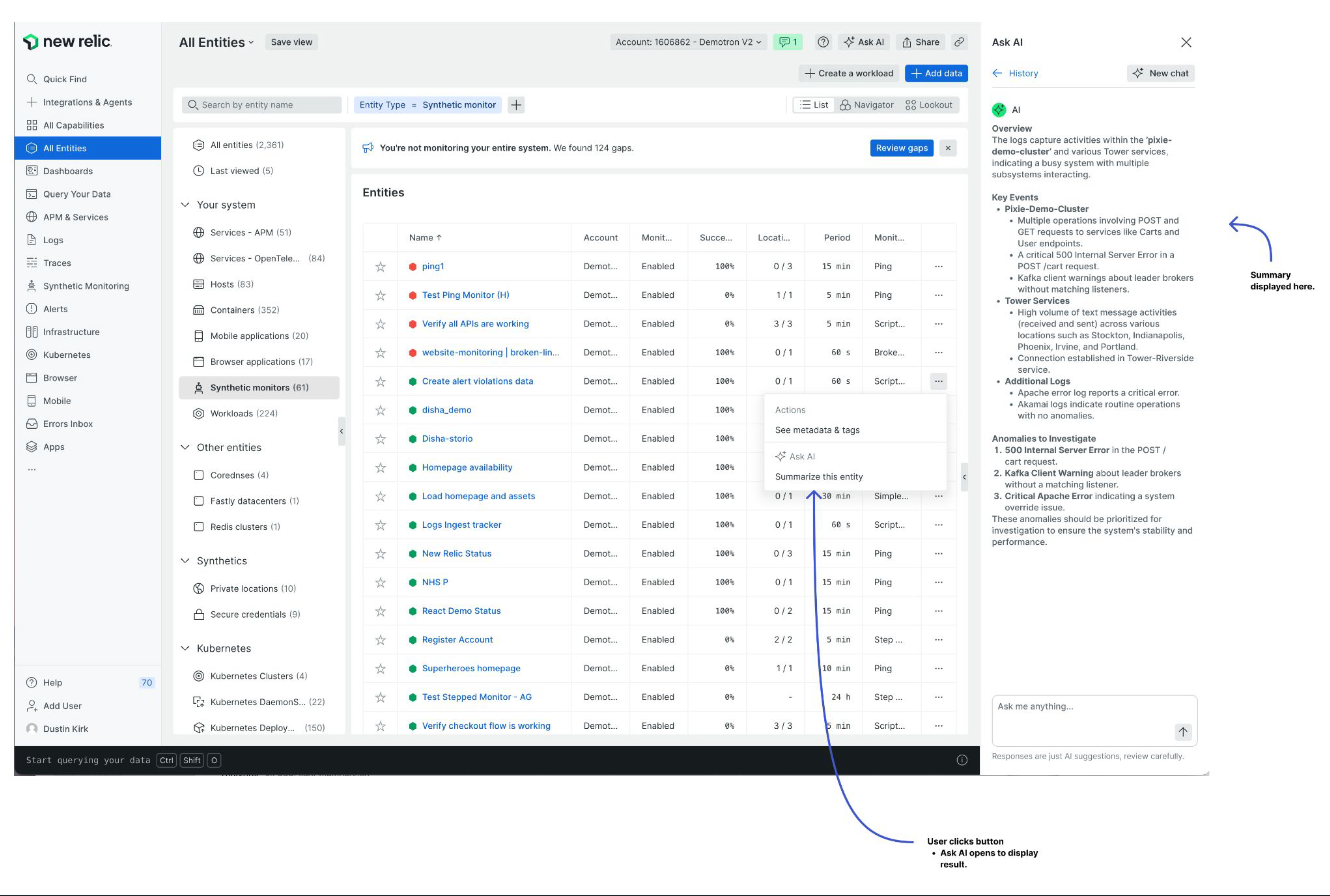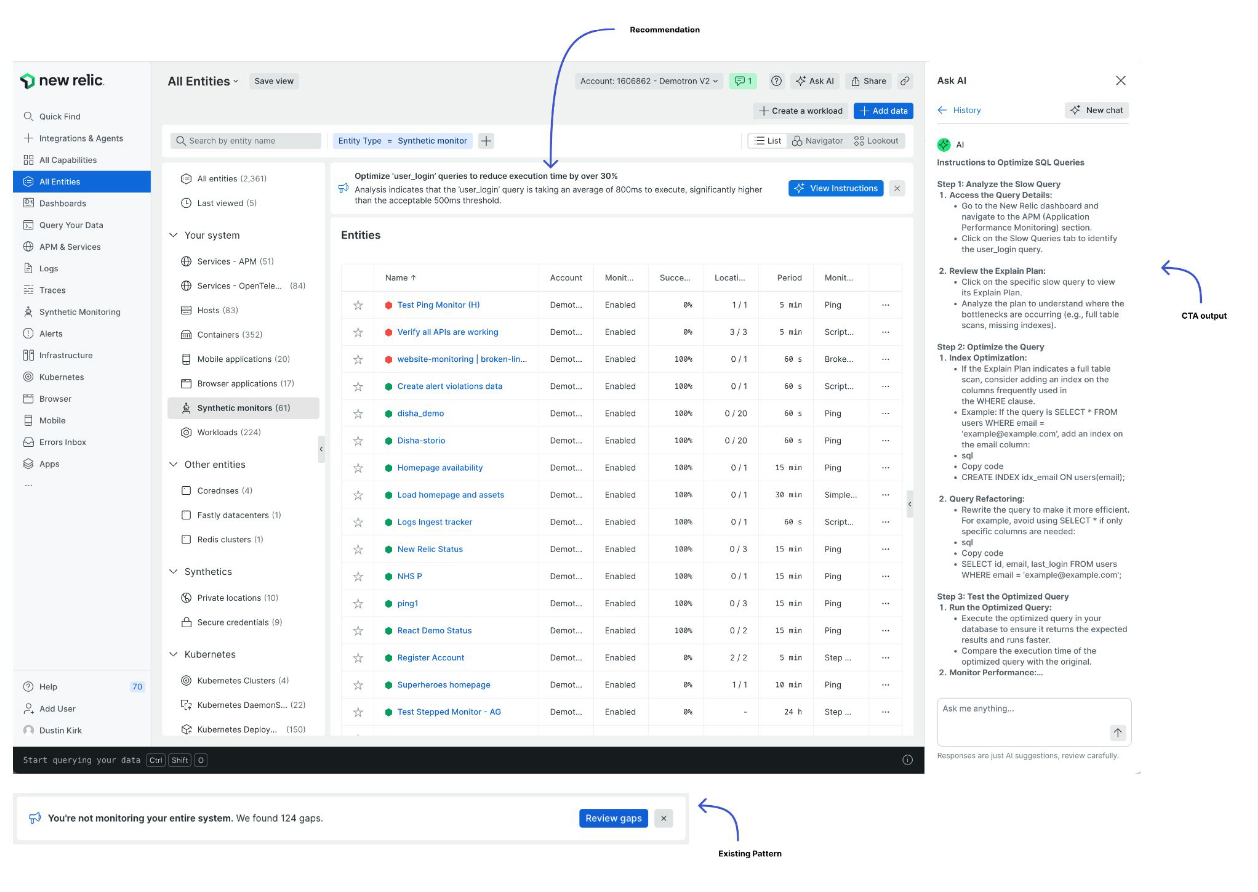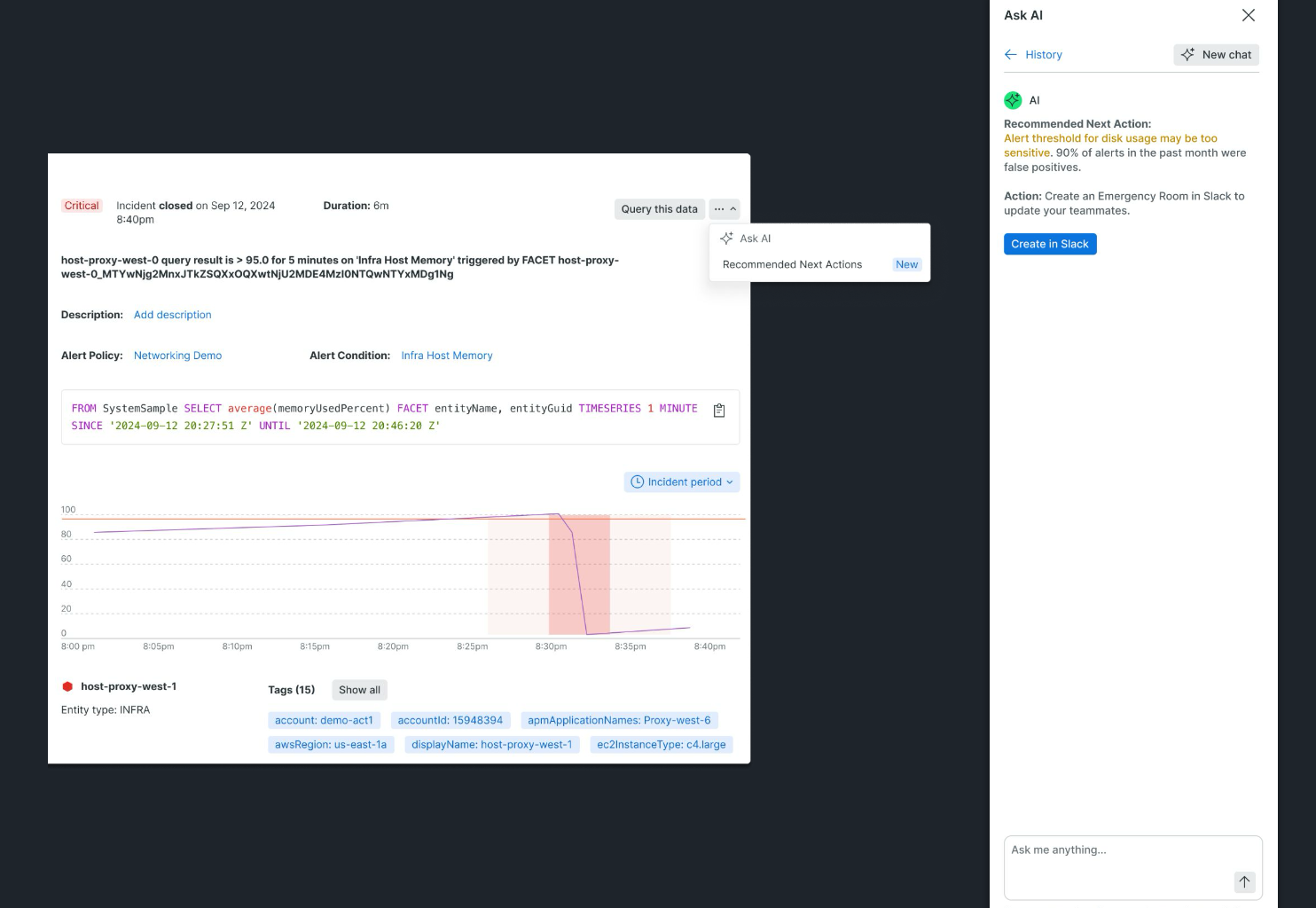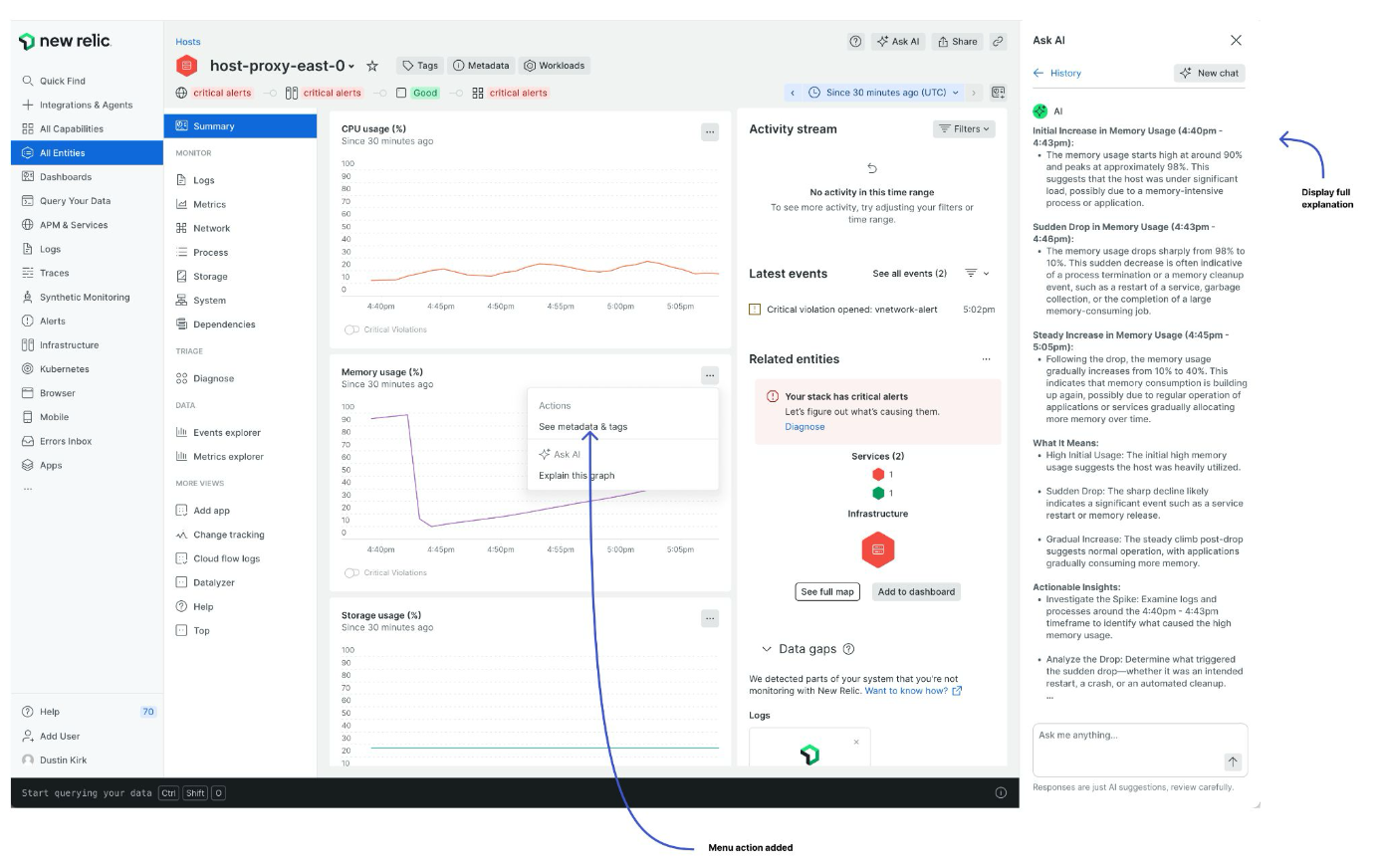NEW RELIC: CONTEXTUAL AI PATTERNS
NEW RELIC: CONTEXTUAL AI PATTERNS
NEW RElic’s design teams lacked standardized patterns and guidelines for implementing contextual AI features.
Built on a series of conceptual designs I created alongside my team of three, this initiative established standardized patterns and guidelines that supported the company’s AI Leadership priority while accelerating development of intelligent observability features.
CONTEXTUAL AI PATTERNS
overview
The AI Patterns Project formalized and documented a series of contextual AI patterns in New Relic’s One Core design system, to enable consistent implementation of AI features across New Relic products. Built on conceptual designs I created alongside two other designers, this initiative establishes standardized patterns and guidelines that support the company’s AI Leadership priority, while accelerating development of intelligent observability features.
problem statement
Design teams lack standardized patterns and guidelines for implementing contextual AI features, resulting in inconsistent experiences across products and inefficient design processes, as each team creates their own solutions.
IMPACT
User Value:
Consistent, intuitive AI interactions that feel native to the New Relic experience, increasing user adoption and satisfaction with AI features.
Business Value:
Accelerated development of AI capabilities that differentiate New Relic’s platform, supporting the $100M run-rate target from new products by early 2026.
project scope & team
Design Team
Principal Product Designer
Lead Product Designer (myself)
Senior Product Designer, Design Systems
Product Design Intern
Communication & Cadence
Overall 4-week sprint (Discovery to Design Sign-Off)
3x/week sprint for internal design team
Research: 4 internal Discovery syncs (1 week)
Design & Iteration: 3 workshops (2 weeks)
Presentation to SVP of Product Design & XD team
Tools
Figma - Prototyping
Slack - Collaboration
Google Suite (Slides, Sheets, GMail) - Communication & Collaboration
Zoom - Collaboration
Smart Filters: Provides the user 1-click shortcuts to apply a suggested filter based on the context of the user and prior actions.
Smart Titles: Replace unstructured titles with AI-generated titles that are more readable.
New Relic AI Summarization: Provide a shortcut along with page action buttons that summarizes entire tables of data, via an output in the right-hand side panel.
Line-Level Summary: Summarizes individual table rows via Ask AI, with an output in the right-hand side panel.
Section Message Recommendations: Utilizes existing page pattern to surface insights and recommendations in an in-obtrusive way.
Recommendations (cont.): Given the role of the user and the context of the page they are on, provide recommended next best actions for them to take.
Explaining Charts & Graphs: Include option on charts and graphs that uses NRAI to explain the contents (and context) of the chart.
New Item Creation: Provide the user a means to streamline the creation of dashboards, alerts, workflows, etc. via natural-language input.
Natural Language Input: Populate form inputs, utilizing natural language. Useful for configuring multiple inputs at once for settings, rules and conditions.
Analyze Entity: By providing notifications on related entities, NRAI helps quickly identify the root cause of performance issues and take corrective action to minimize adverse impact.
In-Line Annotations: A drop-down action that provides a summary of key findings from a selected chart, graph or entity, with actionable recommendations to resolve errors.

